In the first half of the twentieth century, the slotted screws proved to be increasingly problematic. The industrialization brought about more and more power-operated screwdrivers. Aligning the screwdriver to the slot in the screw took up too much time and laterally slipping off of the screw lead to damages of the workpieces.
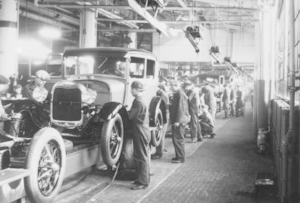
To counteract these disadvantages, J. P. Thompson patented a screw with a cross recess in 1933. He sold the patent to the Phillips Screw Company. It improved the profile and introduced the screw to the market in 1936/37.
The flanks of the Phillips cross-head screws taper off towards the tip. The conical form facilitates inserting the tip of the screwdriver with the power-operated screwdrivers. In addition, an axial force is generated during tightening which pushes the screwdriver out of the screw. Originally, this effect was intentionally used as torque delimitation. But over time, it proved to be a disadvantage of the Phillips screws.
Phillips screw symbol and screwdriver tip with conical flanks
The Phillips Screw Company and the American Screw Company patented a cross-head screw with parallel flanks which prevents the ejection force during tightening or loosening. The name Pozidriv is the abbreviation or acronym for "positive drive".
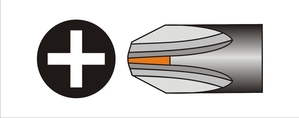
Pozidriv screw symbol and screwdriver tip with parallel flanks
According to ISO standard, the two cross-head screwdriver types are designated as PH for Phillips and PZ for Pozidriv screws.
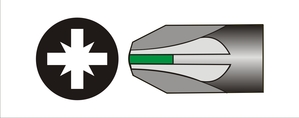
What are the differences in their application?
Advantage of Pozidriv - Disadvantage of Phillips
When applying high torques, the conical Phillips form generates an ejection force that pushes the screwdriver out of the screw. With Pozidriv, the parallel form prevents this force.
Advantage of Phillips - Disadvantage of Pozidriv
Phillips screwdrivers can be used for Pozidriv screws, but they do exhibit some play. Pozidriv screwdrivers, on the other hand, cannot be used for Phillips screws.
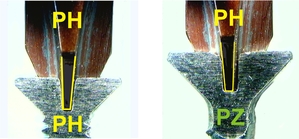
Left image: Phillips screwdriver in Phillips screw
The conical form leads to ejection forces
Right image: Phillips screwdriver in Pozidriv screw
The conical screwdriver shows play in the parallel screw.
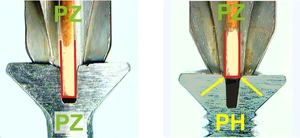
Left image: Pozidriv screwdriver in Pozidriv screw
The parallel form prevents ejection forces.
Right image: Pozidriv screwdriver in Phillips screw
The parallel tip cannot penetrate into the conical screw. This is often the reason why the screwdriver is selected by (at least) one size lower, which leads to an overloading of the tool.
Easily recognizeable through color-coding for the tools from PB Swiss Tools:
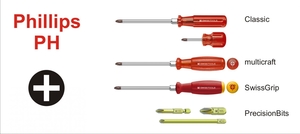
The screwdrivers and bits for Phillips screws are marked red/yellow
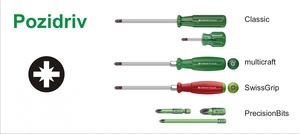
The screwdrivers and bits for Pozidriv screws are marked green:
Tip: In case of doubt, use a Phillips screwdriver. While they do not perfectly fit into the Pozidriv screws, one can at least insert the correct size. The use of Pozidriv screwdrivers in Phillips screws works only with screwdrivers that are too small and easily leads to damage of the screw or the tool.

